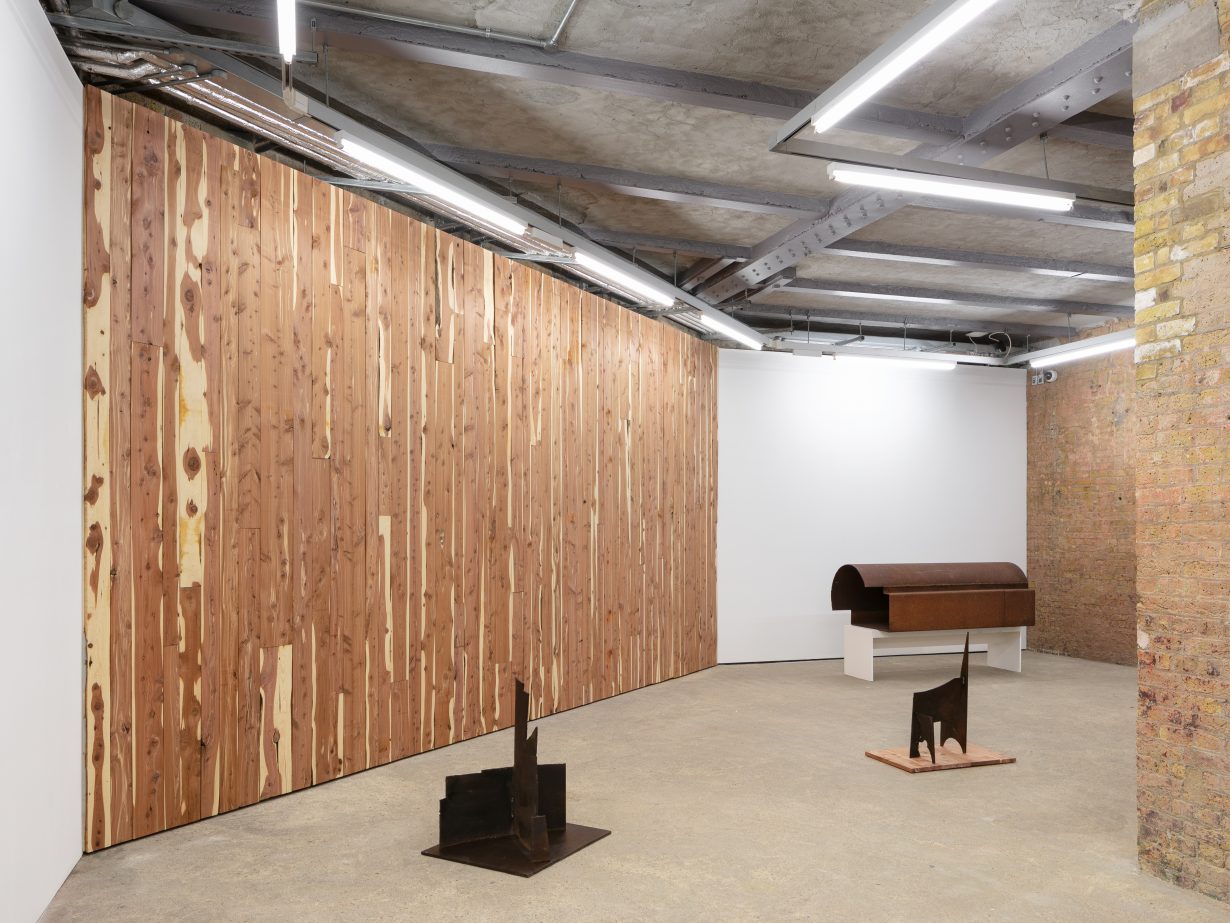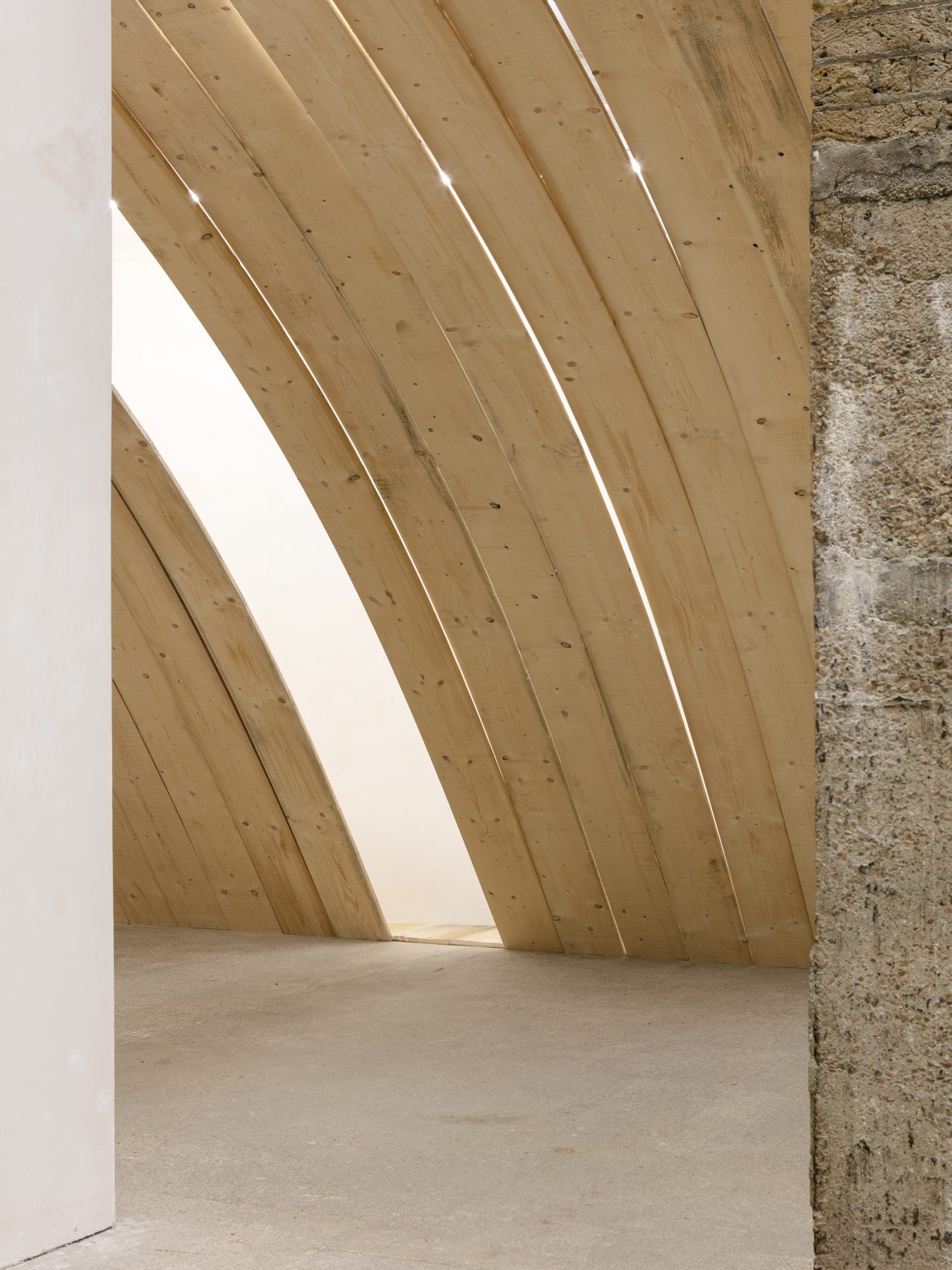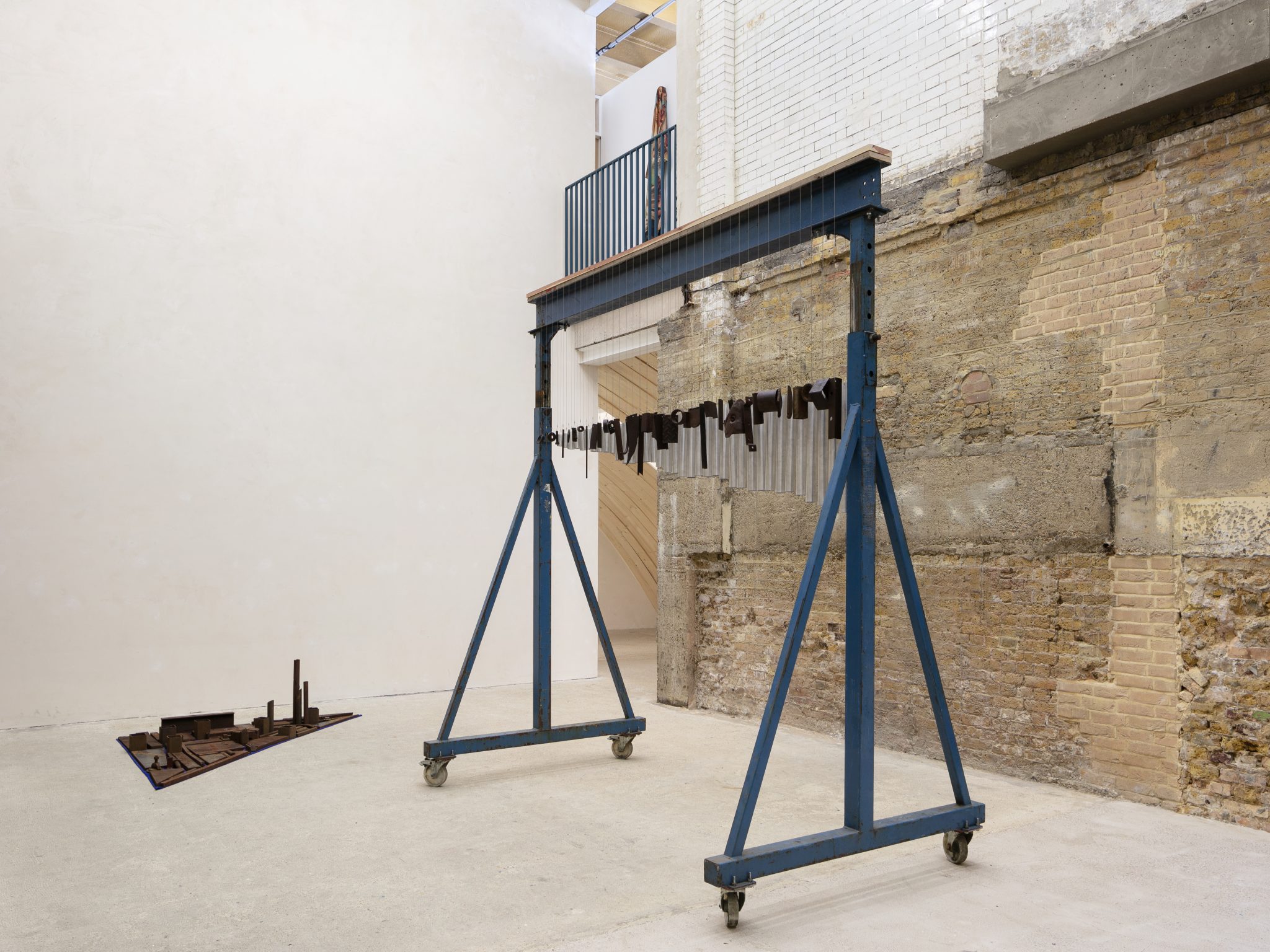Animal Magnetism at Goldsmiths CCA displays the artist’s ever-elusive sculptures drawn from found and reworked objects, at once poised and aloof
These objects look like relics from a civilisation we never knew. There’s a wall of thick brass tubes, striated with nature’s marks; a pair of steel semicircles, poised on a slender point; a group of thin steel planes welded into the shape of an animal. Several of the works are torqued: the huge timber planks of Untitled (Arc) (all works but one 2022) are wedged between ceiling and floor, and whatever the metal rod in Untitled (2014) originally was – part of a gantry? – it’s now bent back upon itself and affixed to a wooden plank.
Animal Magnetism is, as usual with Virginia Overton, a show of sculptures drawn from objects she’s found and reworked. She has a constructivist soul, and her favoured materials, from timber to metal, are deployed at Goldsmiths CCA. With exposed brick walls around you, and concrete underfoot, the gallery’s basement resembles a workshop; the American artist’s ‘indoor sculpture garden’ (as the curators term it) is inspired by its unpolished, unfinished air. A breezy experimentalism reigns, as Untitled (chime for Caro) recycles Sir Anthony’s offcuts into a giant rack of chimes, while Untitled (sculpture on table) could be a small tribute to John Chamberlain, the prince of twisted steel.

Occasionally there are flickers of menace. The curves and arcs, up close, are palpably charged with force, while Untitled (good boy) resembles a nightmare dog, its head distended to a point. Upstairs, the Tank Gallery is sunk in near-darkness, broadcasting Richard Strauss’s Also Sprach Zarathustra (1896) on a slowed, ominous loop. Two mirrored works spin equally slowly, one pendant and one on a plinth, casting shards of light on the floor and on the viewers passing through. Just beyond this space, in the open air of the Courtyard Gallery, a hard-angled steel duo are enclosed by towering, studded walls. When I emerged from the dark, the sky was ashen, there were distant sirens and those works were being spattered by rain. Suddenly the ambience was richer: less postindustrial blankness, more the dread of a survival-horror game.


I’d have liked to sense more of that menace: it casts these objects’ impermanence as sinister, not merely a fact. Overton’s work can seem elusive in how it anticipates critique: you can’t brand its placement or its form disharmonious, because it’s too aloof for criteria. When seen from a certain angle, or framed suggestively, these sculptures flare with temporary life – but then they withdraw, as if bored of attracting your eye and then rebuking it. Several hedge their bets: untitled (little guy), for instance, is neither untitled nor a figurative work. Overton is relaxed about all this. She disassembles her sculptures after her exhibitions close, and recycles their pieces in something new. Back in 2013, she even claimed – in a quip to the curator Fabrice Stroun that has since become too well known – that an object of hers, whether by the road or in a gallery, was the ‘same thing’ either way. Yet her artworks aren’t abstract designs, and it isn’t the ‘same’ situation if time and space have changed. I’m looking at sculptures in South East London, not steel shards in the American scrub.
Objects don’t have moods: they conjure them. One observer might look at Overton’s ‘good boy’ and find its ungainly body cute, while another might stare at its featureless face and feel alienated, discontent. The gallery space won’t help to resolve things, as it provides Overton with too neat a surround: its industrial look suggests a luxuriance in possibility. See the sculpture one way, or see it another: it may be repurposed soon anyway. But Overton’s best work has both site-specificity and individual poise: her floating glass orbs in the Venetian lagoon, for instance, are among the triumphs of the Biennale this year. By contrast, Animal Magnetism is averse to delicacy, and often tends to the mute and cold. The sculptures start to withdraw as soon as you begin to suss their virtues out: stay quiet, pareidoliac. Being caught in surmise is par for abstraction – that may be one purpose of nonfigurative art – but it’s rare that you find an exhibition so insistent on inconclusiveness. Meanings, like monsters, are things we dream into being; the reality, Overton reminds you, is merely a game of wood and steel.
Animal Magnetism at Goldsmiths Centre for Contemporary Art, London, through 31 July
